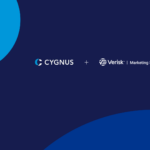How We Hash Data to Protect Consumer Privacy
Handle Personally Identifiable Information Responsibly
Our products enable publishers, marketers, and lead sellers to provide the most relevant and timely consumer interactions while protecting the consumer’s privacy and anonymity at the same time. Honoring consumer privacy and understanding consumer preferences are the most critical parts of providing an exceptional customer experience.
Hashing algorithms are one example of how we protect consumer privacy. Hashing is the process of generating a value from a text input using a one-way cryptographic algorithm that enables the security of consumer information and data (see text box below).
That one-way function means we cannot determine the original value input based on the hash code. This ensures that Jornaya does not store any of the raw data or personally identifiable information (PII) including name, phone or email.
It’s the Golden Rule of Data and we take it seriously. We don’t capture and store PII (name, phone, email) in our products or services. The consumer is always protected, which means our partners are too.
| What is Hashed Data?
Hashing is the process of generating a value from a text input using a one-way algorithm that enables the security of consumer information and data. |
| What are Hashing Algorithms?
Hashing algorithms are functions that take a text input and return a hash code or message fingerprint of that input. The resulting hash code is a fixed length and will vary widely with small variations in input. |
| Why are Hashing Algorithms Used?
One of the primary features of hashing algorithms is that they are one-way functions, which means that it is nearly impossible to determine the original input based only on the hash code. Hashing algorithms power the security behind internet banking and allow Jornaya to receive data in a way that protects consumer privacy. |
| How are Hashing and Encryption Different?
Encryption turns data into a series of unreadable characters that aren’t of a fixed length. The Key difference between encrypting and hashing is that encrypted strings can be reversed back into their original decrypted form if you have the right key. |
Leveraging Partner-Generated Sources
All of the data we work with is provided by partners who contribute their data to help brands and their customers achieve the best consumer experiences. We only use data from partners who choose to contribute their data to us. Examples of data contributors include:
- Lead Generation Websites
- Comparison Shopping Sources
- Identity Resolution
- Shopping Outcomes
- Customer Interests
Our partners promise to keep their consumer data protected, and we think of ourselves as an extension of their promise. We treat data from all of our partner-generated sources (listed above) with great care and respect.
Bring More Value to the Customer Through Improved Privacy
Responsible companies view consumer privacy and data security from both sides of the equation: as a business and a customer. If the customer wins, the company wins and stays ahead of regulations.
All data we deal with is handled using the same advanced hashing algorithms as large financial institutions. This allows us to safely derive data insights based on aggregate counts, calculations, and scores while ensuring we all reach our ultimate goal: bringing more value to the customer.
It’s about activating the right data to provide timely and relevant outreach that best meets the needs of the customer, throughout their shopping journey. It’s also about creating a better experience in a secure environment. We take anonymous behaviors and turn them into derived data packages.
The data we deal with is only connected to non-identifiable records. It’s crucial to our mission: We have not and will never capture and store PII.
Read more FAQs on hashing in our support library.








 Your Privacy Choices for Platform Services | Data Services
Your Privacy Choices for Platform Services | Data Services